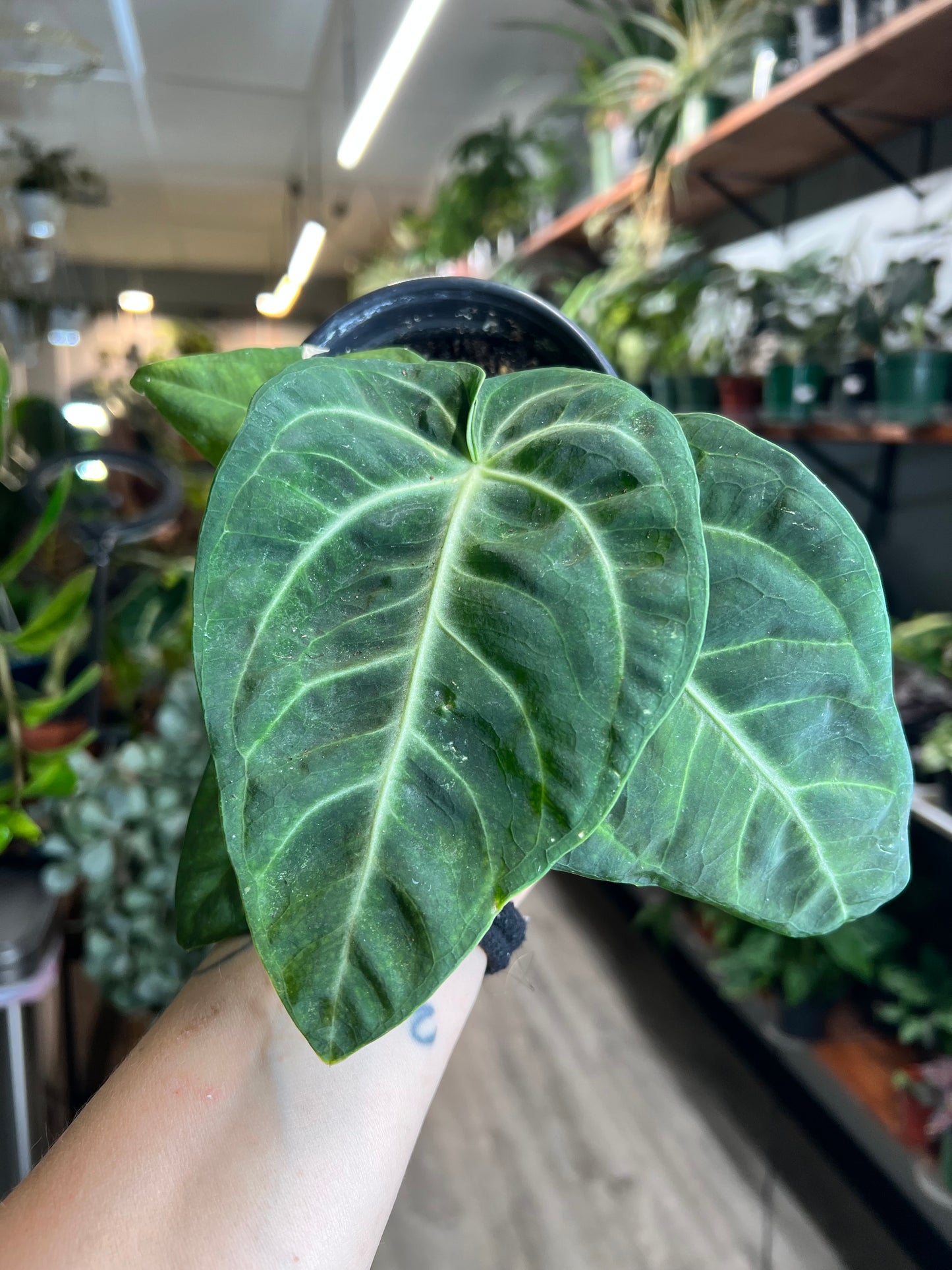The Rooted Plant Shop
Anthurium Villenaorum 4”
Anthurium Villenaorum 4”
Couldn't load pickup availability
The Anthurium villenaorum is a rare velvet-leaf species native to the humid jungles of Peru. It stands out with its deeply lobed, heart-shaped leaves covered in rich green velvet and striking silver veins. As the plant matures, its foliage becomes even more textured and bold, making it a stunning centerpiece in any aroid collection.
This Anthurium thrives in warm, humid conditions and prefers a chunky, well-draining mix—typically a blend of orchid bark, perlite, and sphagnum moss. It enjoys consistent moisture but should never sit in soggy soil. High humidity (60% or more) will encourage new leaf growth and help maintain its velvety appearance. Fertilize lightly during the growing season for the best results.
Place your Anthurium villenaorum in bright, indirect light. Too much direct sun can burn the delicate leaves, while too little light may cause leggy growth or smaller foliage. An east-facing window or a few feet from a south or west-facing window with filtered light is ideal. With the right balance of care and environment, this tropical gem will reward you with lush, dramatic foliage year-round.
Share

Let customers speak for us
from 424 reviewsThe packaging was great. Everything safe and secure. Beautiful fully intact plant with a cozy heat pack.

This is my 2nd time purchasing an Alocasia Polly 4 1st time in the winter 😍 40 hour heat pack was surprisingly hot on arrival Superbly Packaged! Super healthy and pretty I’m so happy thank you

Loving it so far! It’s beautiful!

Do not hesitate! Add to cart and checkout, you won’t be disappointed. Mel is incredibly knowledgeable and has taught me so much, she doesn’t just sell plants she teaches and shows you how to keep them alive and thriving! I always receive my plants quickly, and most important - safely. Mel packages them with so much care, and ensures they will make the voyage okay! We are in the thick of winter in Wisconsin, and both times our heat pack was still warm and plants were good. And I haven’t even mentioned the quality, huge selection and amazing prices! One other thing worth noting is none of her plants will come with problematic pests like many bug box, ope I mean big box stores! Here are a few photos, I wish I could share more than 5.
This plant arrived healthy and beautiful in spite of below freezing tempertures outside. 😁

All of my plants arrived perfect and are so beautiful! Will be coming back.

Packaging was great!!! Plants arrived is great condition and heat pack was still a little warm.

She was delivered looking like perfection! She was packed beautifully. Mel is my new go-to for all my plants!

Plant arrived quickly and heathy Inspite of cold temps. Plant was wrapped and shipped with the utmost protection and care!!! The firefly is doing well in her new home!!!! Will purchase again from The Rooted Plant shop without hesitation!!







